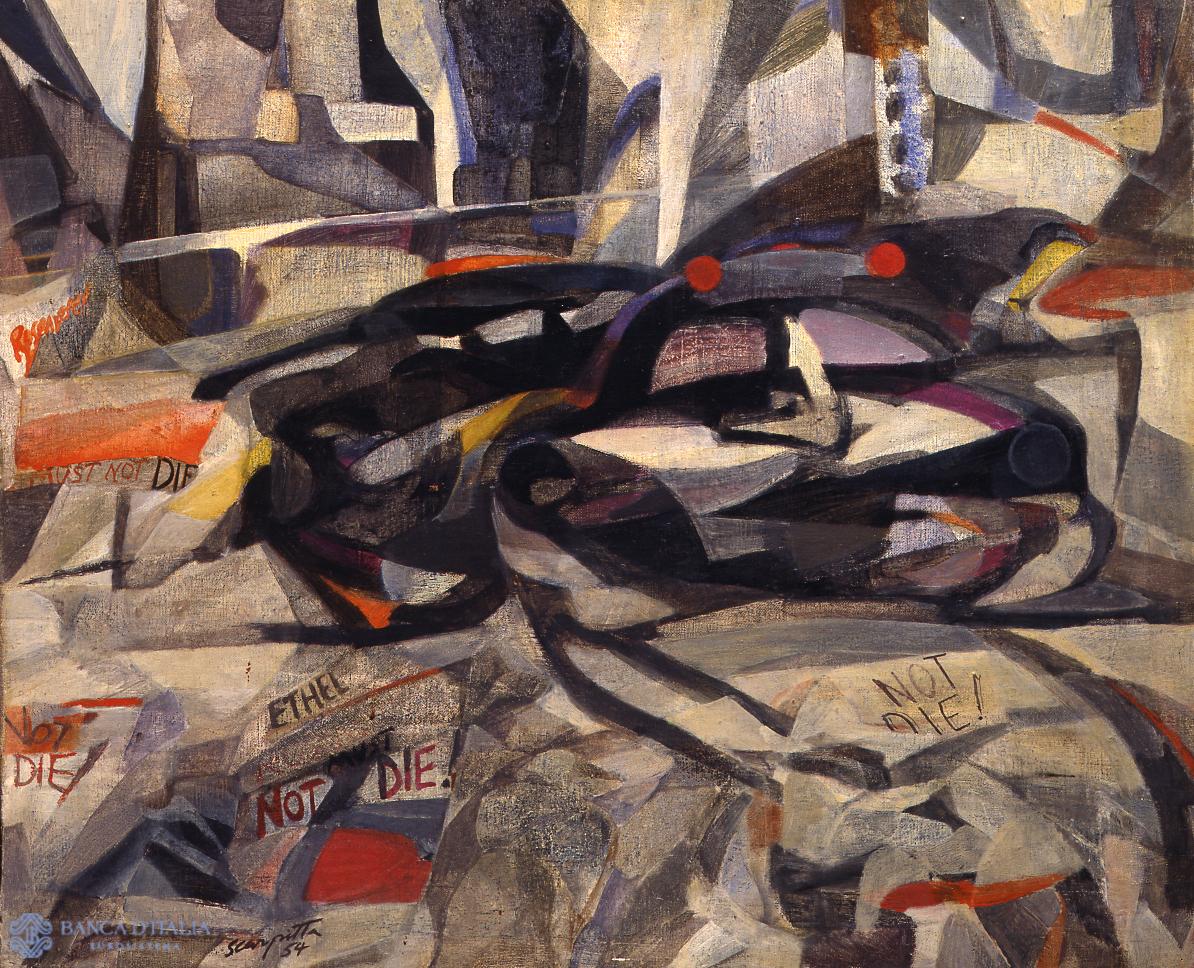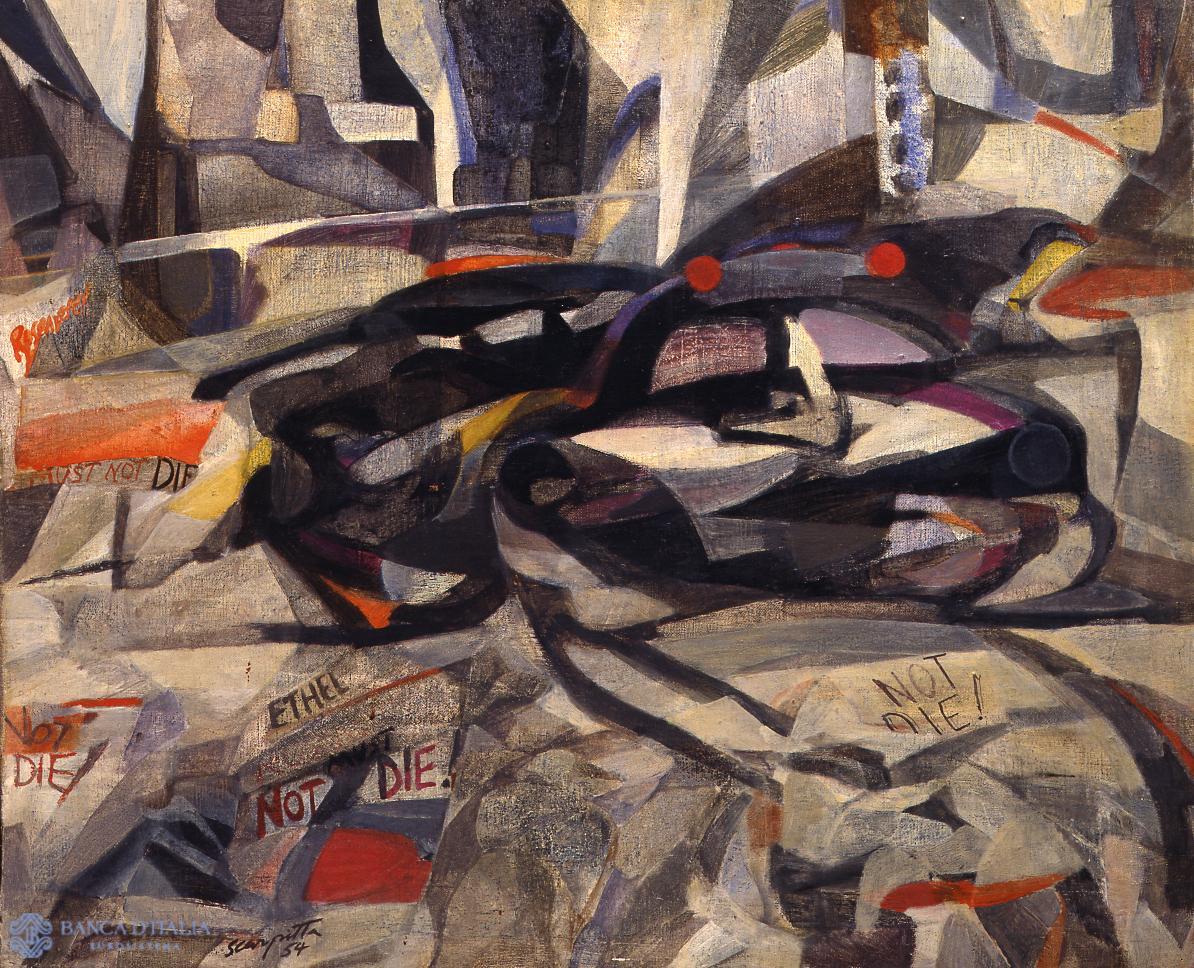Salvatore Scarpitta was born in New York in 1919. His father was an Italian sculptor, his mother of Russian-Polish origin. He went to school in Hollywood and later studied in Italy, where he graduated from the Academy of Fine Arts in Rome in 1940. He fought in the Resistance in the mountains of Abruzzo and then served in the United States army. He later returned to Italy and moved to Rome, where he debuted as a painter.
From 1952 onwards he took part in the Venice Biennale and exhibited in solo and collective shows throughout Europe. In Rome, where he forged strong ties with the new art of Burri, Turcato, Twombly and many others, the watershed was his 1958 solo show in the Tartaruga Gallery. It was here that for the first time he exhibited the extroflexed canvases and works with stretched bands, which generated enormous interest and made a great sensation. Fontana too, who at the time had not yet made public the “spatial concepts” using the cuts inflicted on the canvas, was probably influenced.
In Rome he met the gallery owner Leo Castelli, who urged him to exhibit his work in New York, something Scarpitta did in 1959. It was the beginning of an extremely fortunate season. From then on he was freed from Italian isolation and in tune with the New Dada of Rauschenberg and Johns –the most advanced representatives of the contemporary international art scene. This mutually beneficial relationship between Castelli and Scarpitta would last for many years, with the artist exhibiting frequently in Castelli’s gallery, at all stages of his development. As the years passed his art became more and more daringly removed from traditional painting and perilously compromised by his “figures” from life: from his series of race cars to native American sleds, retracing Scarpitta’s favourite “places” of memory.
Salvatore Scarpitta
Salvatore Scarpitta (New York 1919 - New York 2007)
20th century AD

Compiler
Fabrizio D'Amico


